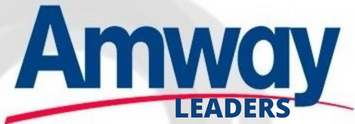Let us discuss What is Amway Ruby Income in this post.
A Ruby must obtain double the Maximum Performance Bonus for a month in the Performance Year to be considered. There is a 21% performance bonus at 7500 PGV, and double that amount is 15,000 PGV in one month. When Platinum qualification is fulfilled, the Ruby pin is issued. Further, Foster's volume does not include volume from overseas legs, nor does it include volume from any downline groups, such as 21% groups.
In several emails, Emeralds earn over $100,000 a year and Diamonds earn over $250,000 annually from their Amway business.
I accept that claim. The information in the Amway Business Review (SA-4400) as of January 1997 was used to reveal how people may achieve that kind of money with an Amway business alone.
Remember that results will vary depending on the volume and organisational structure.
Make some assumptions. Q12 companies held at least 7,500 PV volume for 12 months, thus I'll assume the emerald or diamond is a Q12 direct. Three of the six movies they supported also fall under the Q12 classification. This kind of business is most likely the exception, and not the rule.
I will suppose that everyone of these (X) has a business volume of at least 20,000 in each of the months (X). In excess of $250,000 (actual dollars) should be a very profitable direct deposit scheme if structured properly.
Performance bonus: $5,000 for working 25% of the time. Let's assume half of that is distributed to downline performance bonuses, therefore, $2,500 times 12 is $30,000.
A 4% Leadership Bonus is given for each leg. This is $800 monthly or $9,600 annually each leg.
For fiscal year 1995, the average profit sharing incentive was $2,088. Let's quadruple our amount, as it wouldn't be a "ordinary" business. Diamonds double in value twice.
In 1995, the average Pearl incentive was $1,407 per month, or almost $17,000 for an emerald. We'll go with $20,000, then double that for a diamond.
The fiscal year 1995 average payment of Emerald bonuses was $10,139. $11,000 per emerald, and treble that for a diamond.
In fiscal year 1995, the average Diamond bonus was $40,794. That totals $41,000.
Now let's add up the numbers.
| Bonus | Emerald | Diamond |
| 25% Performance | $30,000 | $30,000 |
| Profit Sharing | $4,200 | $8,400 |
| Leadership | $28,800 | $57,600 |
| Pearl | $20,000 | $40,000 |
| Emerald | $11,000 | $22,000 |
| Diamond | $41,000 | |
| Totals | $94,000 | $199,000 |
Incredible pay, no? Emerald income does really reach close to six digits, but as you can see, I've been liberal in my estimates. For some directors, the year-long average BV that they maintain is 20,000 BV. However, with three or six legs at this level, an emerald or diamond would be exceptional, not typical.
I didn't forget the ruby bonus. Assumption: No one had ruby loudness. For the emerald to have ruby side volume, add around $22,000 to the people listed.
Let's examine a "average" firm. Using the averages provided in the SA-4400, I will calculate emeralds and diamonds' annual revenue.
Ruby bonuses from the SA-4400 total $677 every month, or $8,124 year.
Individual results will vary dependent on volume and organisational structure. Many emeralds and diamonds make more than the figures I just calculated.
So where is the difference? Direct Distributors and above can earn income through the "system," which according to them is the only way to prosper in the Amway industry.


0 comments: